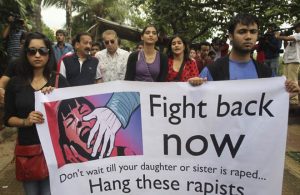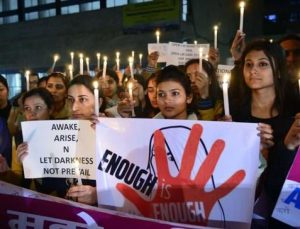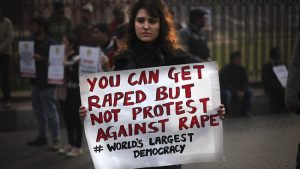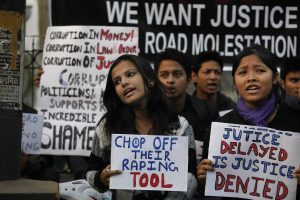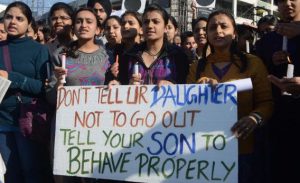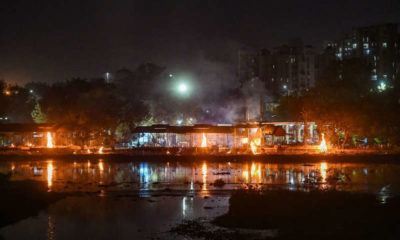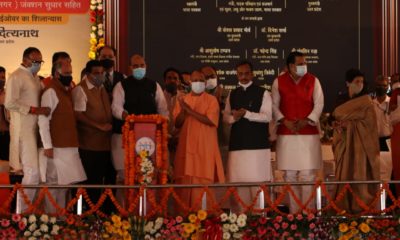Feature
Uttar Pradesh grabs No.1 position in criminal cases during year 2016
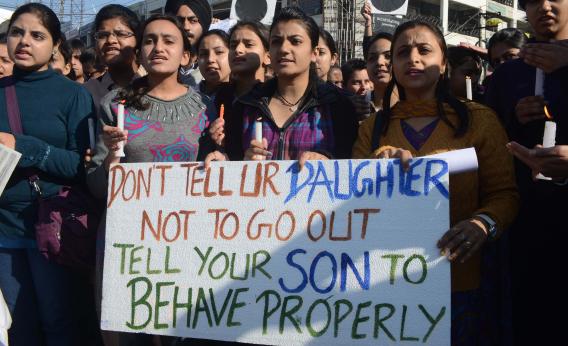
New Delhi: According to National Crime Record Bureau (NCRB), the India’s largest populated state Uttar Pradesh is leading at No. 1 position in crime graph record with criminal cases under IPC recorded highest at 9.5 percent.
Whereas at number 2nd and third places, Madhya Pradesh registered 8.9 percent and Maharashtra’s 8.8 percent. In Kerala, 8.7% cases were registered in the total criminal cases across the country.
Now as per the figures released by NCRB, the highest cases of murder and crimes against women were registered in Uttar Pradesh in 2016. The highest incidents of murder in the country’s largest state of UP have happened. There were 4,889 incidents of murder, which were 16.1 percent of such cases.
Major crimes like rape, kidnappings and abduction, crime against women and crime against children increased across the country by 2.6 per cent in 2016 over the previous year, the NCRB said in its latest report on Thursday.
The annual publication of NCRB released by Union Home Minister Rajnath Singh said a total of 48,31,515 “congnizable” crimes were reported in 2016, showing an increase of 2.6 per cent, over the 47,10,676 cases reported in 2015.
Of the total crimes, 29,75,711 are those registered under Indian Penal Code (IPC) and 18,55,804 under Special and Local Laws (SLL), the NCRB data said.
According to the data, the IPC crimes have increased by 0.9 per cent (from 29,49,400 in 2015 to 29,75,711 in 2016) while SLL crimes increased by 5.4 per cent (from 17,61,276 in 2015 to 18,55,804 in 2016).
Uttar Pradesh accounted for 9.5 per cent of total IPC crimes reported in the country followed by Madhya Pradesh (8.9 per cent), Maharashtra (8.8 per cent) and Kerala (8.7 per cent).
Uttar Pradesh leads with No.1 position in crime record during year 2016:
Delhi reported the highest crime rate under the IPC crimes followed by Kerala and Madhya Pradesh, the report said, adding a total of 37,37,870 persons were arrested, 32,71,262 chargesheeted, 7,94,616 convicted and 11,48,824 were acquitted in 2016.
Cases of cyber crime, rape, crime against woman, crime against children, kidnapping and abduction, crime against Scheduled Castes (SCs)/Scheduled Tribes (STs) showed an increasing trend while cases of murder, rioting, robbery and dacoity decreased in 2016, said the NCRB report.
Cyber crime has shown 6.3 per cent increase (from 11,592 cases in 2015 to 12,317 in 2016), rape 12.4 per cent (from 34,651 cases in 2015 to 38,947 in 2016), kidnapping and abduction 6 per cent (from 82,999 cases in 2015 to 88,008 in 2016) while crime against children – comprising cases of kidnapping and abduction, and Protection of Children from Sexual Offences Act (POCSO)- showed increasing trend over the past three years with the significant increase of 13.6 per cent (from 94,172 cases in 2015 to 1,06,958 in 2016).
Crime against women saw an increase of 2.9 per cent from 3,29,243 cases in 2015 to 3,38,954 in 2016 while crime against SCs increased 5.5 per cent (from 38,670 cases in 2015 to 40,801 in 2016) and crime against STs by 4.7 per cent (from 6,276 cases from 2015 to 6,568 in 2016).
Murder decreased by 5.2 per cent (from 32,127 cases in 2015 to 30,450 in 2016), rioting 5 per cent (from 65,255 cases in 2015 to 61,974 in 2016 ), dacoity 4.5 per cent (from 3,972 cases in 2015 to 3,795 in 2016) and robbery 11.8 per cent (from 36,188 cases in 2015 to 31,906 in 2016).
The NCRB said that 19 metropolitan cities have been included in the chapters on violent crimes, crime against women, crime against children, juveniles in conflict with law, crime against SC/STs, economic crimes, cyber crimes, crime against senior citizens and disposal of cases by police and court for the first time in its latest publication covering 2 million population.
A new chapter on missing persons and children has been included to comply the Supreme Court directions along with a new table on cases related to Fake Indian Currency Notes, the NCRB report said.
The NCRB report also first time included the statistics on the seizures of arms, ammunitions, drugs and currency by central armed police forces – the CISF, the BSF, the CRPF, the SSB, the Assam Rifles – and central police organisations like the National Investigation Agency.
Entertainment
Meghalaya Reserves Legalized Gambling and Sports Betting for Tourists

The State Scores Extra High on Gaming-Friendly Industry Index
Meghalaya scored 92.85 out of 100 possible points in a Gaming Industry Index and proved to be India’s most gaming-friendly state following its recent profound legislation changes over the field allowing land-based and online gaming, including games of chance, under a licensing regime.
The index by the UK India Business Council (UKIBC) uses a scale of 0 to 100 to measure the level of legalisation on gambling and betting achieved by a state based on the scores over a set of seven different games – lottery, horse racing, betting on sports, poker, rummy, casino and fantasy sports
Starting from February last year, Meghalaya became the third state in India’s northeast to legalise gambling and betting after Sikkim and Nagaland. After consultations with the UKIBC, the state proceeded with the adoption of the Meghalaya Regulation of Gaming Act, 2021 and the nullification of the Meghalaya Prevention of Gambling Act, 1970. Subsequently in December, the Meghalaya Regulation of Gaming Rules, 2021 were notified and came into force.
All for the Tourists
The move to legalise and license various forms of offline and online betting and gambling in Meghalaya is aimed at boosting tourism and creating jobs, and altogether raising taxation revenues for the northeastern state. At the same time, the opportunities to bet and gamble legally will be reserved only for tourists and visitors.
“We came out with a Gaming Act and subsequently framed the Regulation of Gaming Rules, 2021. The government will accordingly issue licenses to operate games of skill and chance, both online and offline,” said James P. K. Sangma, Meghalaya State Law and Taxation Minister speaking in the capital city of Shillong. “But the legalized gambling and gaming will only be for tourists and not residents of Meghalaya,” he continued.
To be allowed to play, tourists and people visiting the state for work or business purposes will have to prove their non-resident status by presenting appropriate documents, in a process similar to a bank KYC (Know Your Customer) procedure.
Meghalaya Reaches Out to a Vast Market
With 140 millions of people in India estimated to bet regularly on sports, and a total of 370 million desi bettors around prominent sporting events, as per data from one of the latest reports by Esse N Videri, Meghalaya is set to reach out and take a piece of a vast market.
Estimates on the financial value of India’s sports betting market, combined across all types of offline channels and online sports and cricket predictions and betting platforms, speak about amounts between $130 and $150 billion (roughly between ₹9.7 and ₹11.5 lakh crore).
Andhra Pradesh, Telangana and Delhi are shown to deliver the highest number of bettors and Meghalaya can count on substantial tourists flow from their betting circles. The sports betting communities of Karnataka, Maharashtra, Uttar Pradesh and Haryana are also not to be underestimated.
Among the sports, cricket is most popular, registering 68 percent of the total bet count analyzed by Esse N Videri. Football takes second position with 11 percent of the bets, followed by betting on FIFA at 7 percent and on eCricket at 5 percent. The last position in the Top 5 of popular sports for betting in India is taken by tennis with 3 percent of the bet count.
Local Citizens will Still have Their Teer Betting
Meghalaya residents will still be permitted to participate in teer betting over arrow-shooting results. Teer is a traditional method of gambling, somewhat similar to a lottery draw, and held under the rules of the Meghalaya Regulation of the Game of Arrow Shooting and the Sale of Teer Tickets Act, 2018.
Teer includes bettors wagering on the number of arrows that reach the target which is placed about 50 meters away from a team of 20 archers positioned in a semicircle.
The archers shoot volleys of arrows at the target for ten minutes, and players place their bets choosing a number between 0 and 99 trying to guess the last two digits of the number of arrows that successfully pierce the target.
If, for example, the number of hits is 256, anyone who has bet on 56 wins an amount eight times bigger than their wager.

